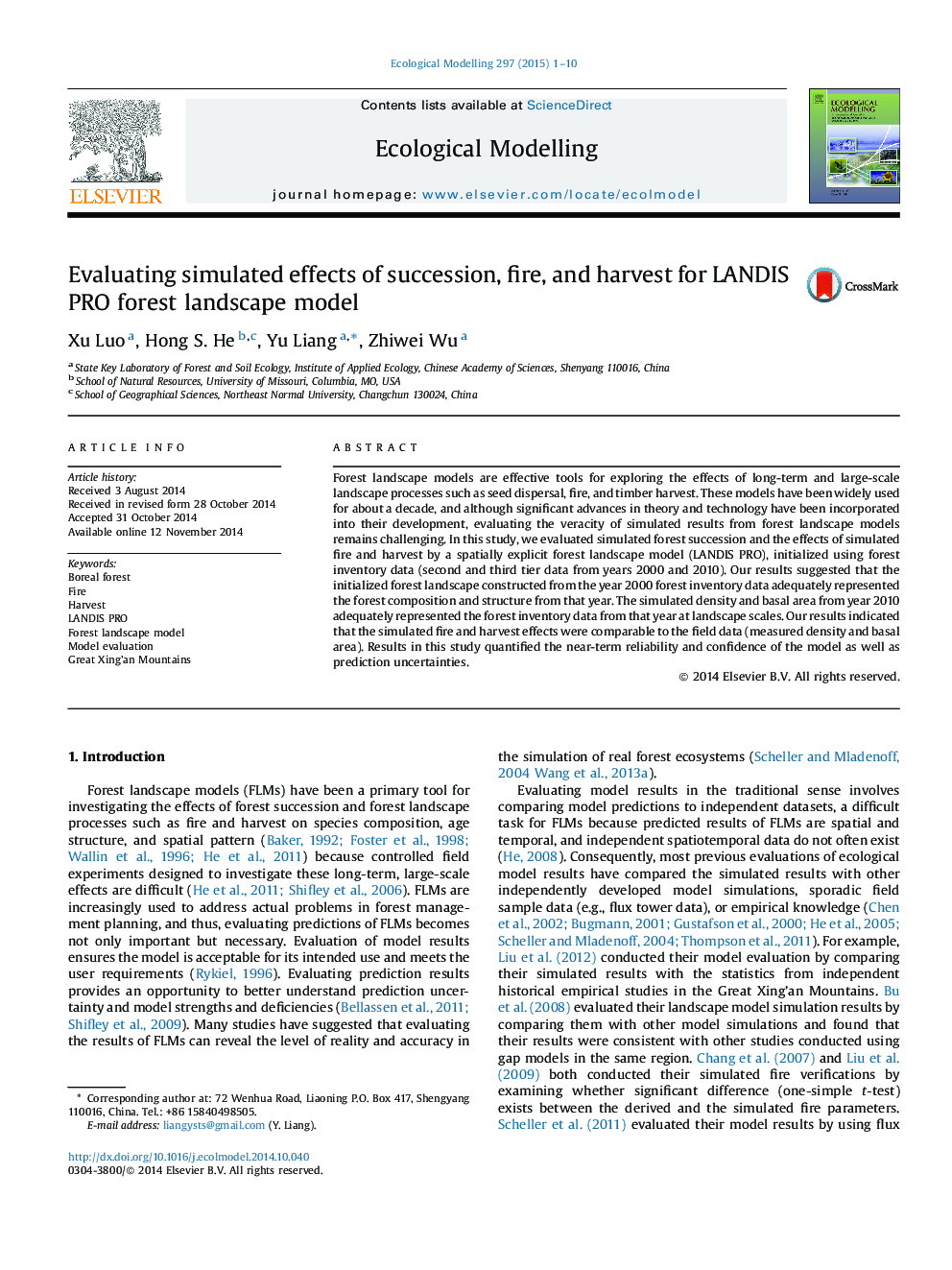| Article ID | Journal | Published Year | Pages | File Type |
|---|---|---|---|---|
| 4375810 | Ecological Modelling | 2015 | 10 Pages |
•We initialized and calibrated LANDIS PRO based on the forest inventory data.•The model results were evaluated at the landscape scale.•Predicted successional results consistent with the expected successional patterns.•The simulated fire and harvest reflected the post regeneration and recovery.
Forest landscape models are effective tools for exploring the effects of long-term and large-scale landscape processes such as seed dispersal, fire, and timber harvest. These models have been widely used for about a decade, and although significant advances in theory and technology have been incorporated into their development, evaluating the veracity of simulated results from forest landscape models remains challenging. In this study, we evaluated simulated forest succession and the effects of simulated fire and harvest by a spatially explicit forest landscape model (LANDIS PRO), initialized using forest inventory data (second and third tier data from years 2000 and 2010). Our results suggested that the initialized forest landscape constructed from the year 2000 forest inventory data adequately represented the forest composition and structure from that year. The simulated density and basal area from year 2010 adequately represented the forest inventory data from that year at landscape scales. Our results indicated that the simulated fire and harvest effects were comparable to the field data (measured density and basal area). Results in this study quantified the near-term reliability and confidence of the model as well as prediction uncertainties.
